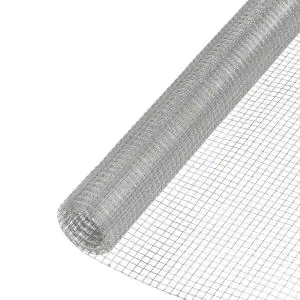Rumination resistance, strength, and affordability are important considerations when choosing the proper material for your particular application. We will examine the characteristics and uses of Hastelloy C-22, SS904L, and SS316L in this post to assist you in choosing the material that best suits your requirements.
What is Hastelloy C-22 and its properties?
The nickel-chromium-molybdenum-tungsten alloy known as Hastelloy C-22 has improved resistance to pitting and crevice corrosion in addition to uniform and localized corrosion. Its outstanding adaptability and high performance in a variety of harsh chemical settings make it a preferred option in industries like pulp and paper production, pollution control, and chemical processing. Hastelloy C-22’s high chromium content makes it highly resistant to oxidizing media, while its high tungsten and molybdenum content makes it exceptionally resistant to reducing conditions.

What are the properties of SS904L?
SS904L, which goes by UNS N08904, is austenitic stainless steel that has elevated concentrations of molybdenum, nickel, and chromium. Its exceptional resistance to pitting and crevice corrosion in chloride-containing environments—found in the construction of saltwater desalination plants, chemical processing facilities, and pharmaceutical equipment, for example—is a result of these alloying elements.
What are the characteristics of SS316L?
Austenitic stainless steel, or SS316L, is a low-carbon variant of SS316 that is well-known for its strong creep strength at high temperatures and exceptional corrosion resistance. Its low carbon content ensures better resistance to intergranular corrosion in the as-welded condition by reducing carbide precipitation during welding. Because of its higher molybdenum content, SS316L is more resistant to pitting and crevice corrosion in settings with chloride, which makes it ideal for use in harsh chemical and marine applications.
When is Hastelloy C-22 the best choice?
When outstanding corrosion resistance and great performance are critical for your application, Hastelloy C-22 is the clear winner. Because of its special combination of tungsten, nickel, chromium, and molybdenum, it offers unmatched defense against a variety of harsh chemical conditions, such as oxidizing and reducing media. The alloy is a strong candidate for use in the chemical processing, pollution control, and pulp and paper sectors because of its resistance to pitting and crevice corrosion, as well as both uniform and localized corrosion. Hastelloy C-22’s high chromium content guarantees its exceptional resistance to oxidizing media, while the addition of tungsten and molybdenum improves its capacity to flourish in reducing environments. Notably, the alloy is the best option for applications where durability and dependability are essential because of its extraordinary versatility and great performance. Hastelloy C-22 is the incomparable option for individuals seeking unwavering corrosion resistance and dependability, regardless of the extreme conditions encountered in pollution control or when confronting corrosive problems in the chemical sector.
In what scenarios is SS904L preferable?
The qualities and features of SS904L are crucial in establishing its appropriateness while pondering the ideal material for your particular need. SS904L, which is also referred to as UNS N08904, is austenitic stainless steel that exhibits exceptional resistance to pitting and crevice corrosion in environments containing chloride due to its elevated amounts of chromium, nickel, and molybdenum. Because of this, SS904L is especially well-suited for use in sectors with high exposure to corrosive chloride environments, such as chemical processing facilities, pharmaceutical equipment, and saltwater desalination plants. Because of the alloy’s resistance to the damaging effects of media containing chloride, SS904L is a good option for settings where pitting and crevice corrosion are major concerns.

When is SS316L the most suitable option?
When deciding which option is best for your particular application, SS316L is a strong contender because of its remarkable ability to withstand corrosion and its high creep strength at high temperatures. This austenitic stainless steel, which is a low-carbon variant of SS316, is well known for its capacity to reduce carbide precipitation during welding, guaranteeing greater resistance to intergranular corrosion in the as-welded state. Because molybdenum is added to SS316L, it becomes more resistant to pitting and crevice corrosion in situations containing chloride, which makes it a perfect material for usage in harsh chemical and marine environments. Because SS316L is resistant to the negative effects of media containing chloride, it is a good option for settings where pitting and crevice corrosion are major concerns.
Conclusion
In conclusion, the particular requirements of your application will determine which of Hastelloy C-22, SS904L, and SS316L to use. To select the best material for your requirements, take into account elements like temperature, corrosive agents, and kind of environment. Making an informed choice might be further aided by speaking with a materials professional.















Thanks for sharing. I read many of your blog posts, cool, your blog is very good.
Your point of view caught my eye and was very interesting. Thanks. I have a question for you.
I don’t think the title of your article matches the content lol. Just kidding, mainly because I had some doubts after reading the article.
I don’t think the title of your article matches the content lol. Just kidding, mainly because I had some doubts after reading the article.